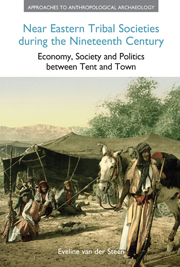 Near Eastern Tribal Societies during the Nineteenth Century
Near Eastern Tribal Societies during the Nineteenth Century “I gave you food,” said Jack, “and my hunters will protect you from the beast. Who will join my tribe?”
(William Golding, Lord of the Flies)Introduction: what is a tribe?
One thing that is clear in the discourse about “tribes”, “tribalism” and “tribal societies” is that the word “tribe” has different meanings for different people. For some it has connotations with Karl May and his romantic heroes, Winnetou and Kara ben Nemshi. Others think of African bush or desert tribes and bands that have been described by European and American anthropologists. Those with a classical background may associate the word with the Celtic and Germanic tribes of pre-Roman and Roman Europe. All of these groups have traits in common: they are aggressive, warlike, sometimes heroic and primitive – at least compared to the civilization to which the narrator belongs.
Jack's “tribe” in Golding's book conforms to that image: aggressive hunters, painted in war-colours, with a chief at the top who orders the fighting and killing. But he adds another element: that of group cohesion, of belonging, and belonging particularly for the purposes of finding food and protection. This second aspect is more prominent in the meaning of the word in the modern English idiom: “the rules of the tribe” refers to social class. It is about belonging, about conforming to the rules that define a group as a form of self-identification.
To save this book to your Kindle, first ensure [email protected] is added to your Approved Personal Document E-mail List under your Personal Document Settings on the Manage Your Content and Devices page of your Amazon account. Then enter the ‘name’ part of your Kindle email address below. Find out more about saving to your Kindle.
Note you can select to save to either the @free.kindle.com or @kindle.com variations. ‘@free.kindle.com’ emails are free but can only be saved to your device when it is connected to wi-fi. ‘@kindle.com’ emails can be delivered even when you are not connected to wi-fi, but note that service fees apply.
Find out more about the Kindle Personal Document Service.
To save content items to your account, please confirm that you agree to abide by our usage policies. If this is the first time you use this feature, you will be asked to authorise Cambridge Core to connect with your account. Find out more about saving content to Dropbox.
To save content items to your account, please confirm that you agree to abide by our usage policies. If this is the first time you use this feature, you will be asked to authorise Cambridge Core to connect with your account. Find out more about saving content to Google Drive.